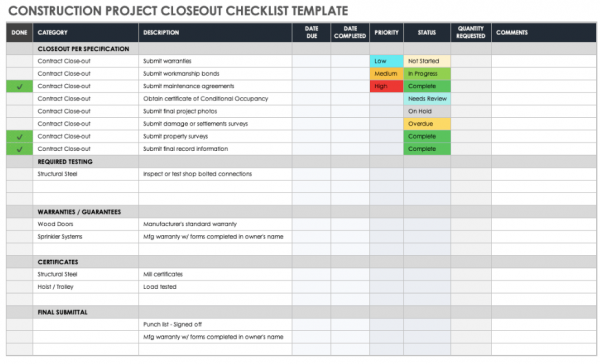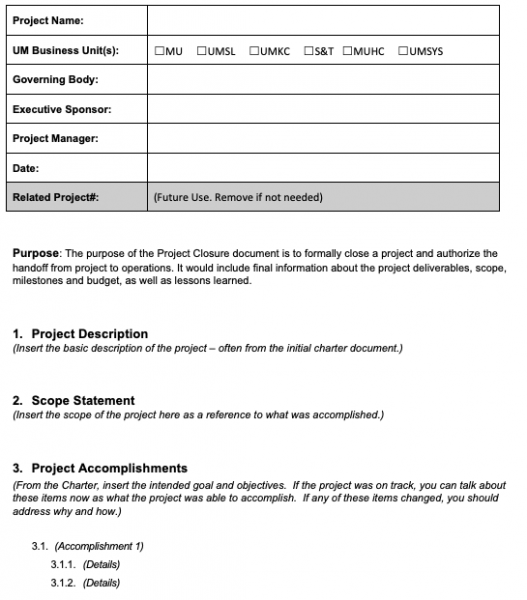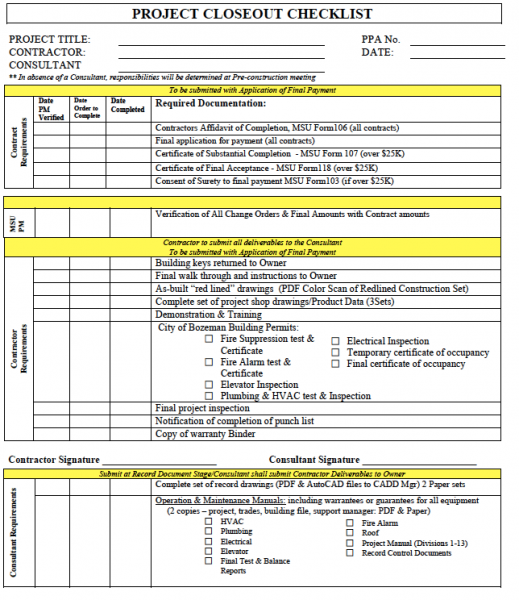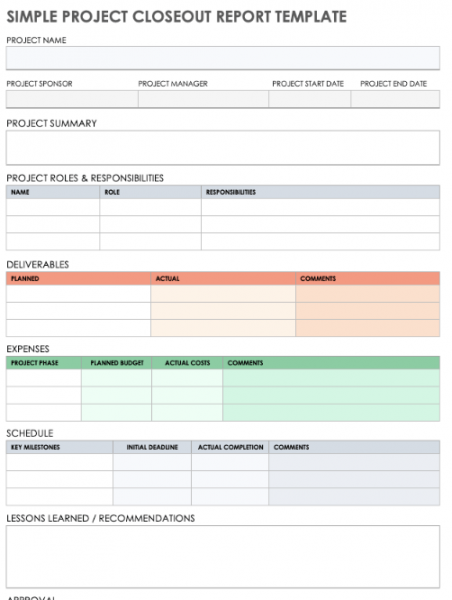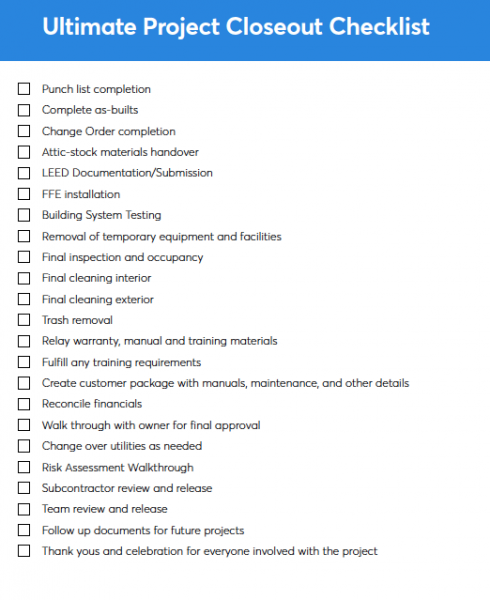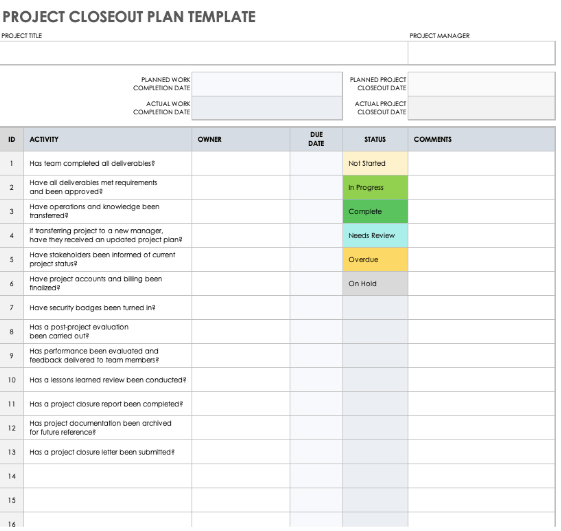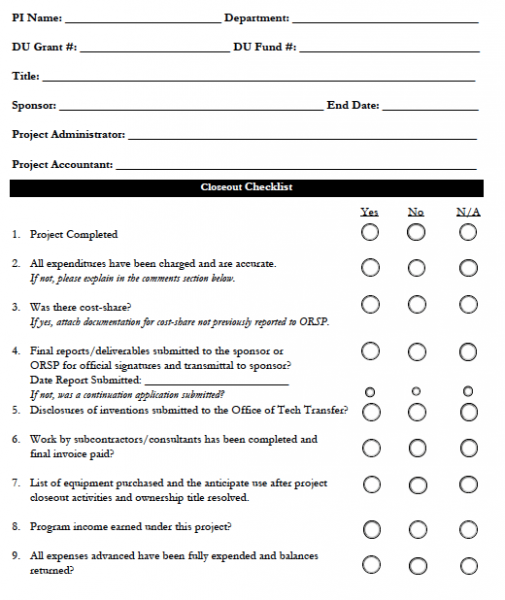Project closure is a phase in which all necessary documentation and other deliverables are completed and approved. It’s typically the last step of a project, but sometimes it comes early if the work itself is complete before the deadline
The project manager is responsible for closing projects, but this doesn’t mean they have to do it alone. They should have a team of people who can help them close the project and ensure that nothing falls through the cracks.
This might include accountants and other finance professionals who can ensure that all financial reports are completed on time, Graphic designers can create any necessary collateral materials or presentations, and even IT professionals can troubleshoot any issues with computers or software programs.
If you struggle with scope creep on your project or notice that the scope of the work has increased over time, it might be time for early closure on your project and start fresh with another client who needs your services immediately.
Projects end when all deliverables are completed, approved, and accepted by the client. This is typically when the final payment is made to the project manager and team.
When to close the project?
When to close a project is a tricky question. Many factors go into deciding when to end a project, but one of the most important has to do with scope creep.
When you start a new project, you have an idea of what needs to be done and how long it should take. Over time, things change; you need to add new features, or someone comes up with a great idea. The problem is that these changes can sometimes cause problems for your project and make it harder for you to complete it on time and within budget.
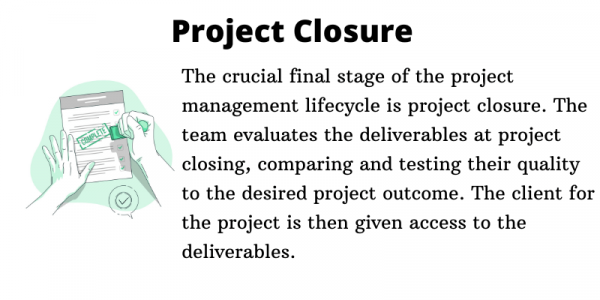
Why Do We Need A Project Closure Checklist?
To ensure your project is ending on a high note
To ensure your project ends on a high note, you should have a project closure checklist that your team can follow. This checklist will help you identify any issues in the project and ensure they are addressed before the end of the project.
If you are running a big project with many people working on it, keeping track of everything that needs to be done can be challenging. With this checklist, you can ensure that all of your tasks are completed so your project can be closed properly.
To ensure all issues have been addressed
This ensures the project is closed on time, saving costs and increasing customer satisfaction.
To Identify improvement areas
A project closure checklist is a tool that helps to identify areas where improvement can be made. The checklist will help you identify areas where progress needs to be made so you can focus your efforts on improving them.
Verify that deliverables have met quality standards
The project closure checklist ensures that all deliverables have completed all quality standards and are free from defects. It is also used to document issues that may arise during the delivery of a project. These issues can potentially lead to problems with the final product, which may affect its viability in the market.
How To Create Project Closure Checklist?
In order to create an effective project closure checklist, use the following step-by-step guide. By following this checklist, you can ensure that every necessary step is taken to move a project from active to closed.
Set the goal and purpose
The first step in creating a project closure checklist template is to set the project’s goal and purpose. This will help you identify the information you need to include on your checklist. For example, suppose you’re working on an internal document, such as a company report or financial planning spreadsheet. In that case, you might want to include information about the audience and how it was delivered. Suppose it’s an external report or presentation, such as a marketing plan or sales proposal. In that case, it might be more appropriate for you to include more technical details about what was done with the report or recommendation.
Choose the project scope
The scope of your project closure checklist should be as specific as possible, but it’s also important not to limit yourself too much. You don’t want to leave anything out, but don’t get so detailed that you end up with a laundry list of irrelevant or unimportant details.
List all the essential steps
Once you have defined all the items, divide them into sections and sub-sections, depending on how detailed you want each checklist item to be. For example, if you’re closing a project on time, you may only need one section with a few items in it; if there have been delays, you’ll likely have more than one section with multiple items per section.
Define a timeline and schedule
The most crucial step in creating a project closure checklist is defining a timeline and schedule. This will help you stay organized and on track with your goals.
Conduct quality control checks
The first step in conducting a quality control check is to ensure that all documents are accounted for. This includes all documents related to the project, such as specifications, plans, budgets, and reports. After this, it is essential to review these documents to identify any missing information or other irregularities. This will help you identify any errors or omissions that may have occurred while creating these documents.
Fill in the blanks
After identifying all the missing information, it is time to fill in the blanks. You can do this by contacting the relevant parties and asking them to provide you with the required details. This will help ensure that all your documents are in order before they are approved.
Benefits Of Project Closure Checklist Template
Verify if all the project goals have been met
The project closure checklist template is an excellent way to verify whether all the goals set during a project have been met. If there are any gaps or omissions, you can identify them early on and rectify them before submitting your documents for approval.
Clear documentation of what was completed
This is the most common benefit of the project closure checklist template. A checklist gives you a clearer view of what was completed and what wasn’t. This can help with project management, an essential part of any business. It also enables you to avoid mistakes that would otherwise be made during a closeout process.
It’s important to note that it’s not just about documenting everything that happened during the project. It would be best if you made sure that your records will also be valuable in the future. For example, if you use the same checklist for future projects, then it should contain only the relevant information for those projects.
Formalization of the method used to close the project
A project closure checklist template is a formalized method to close a project. A checklist is a tool that helps you to keep track of the tasks you have completed and to ensure that all tasks are completed before the end of the project.
Check if any unresolved issues or risks are there
The checklist can be used to document all actions taken during the closing process. It also helps in understanding whether any unresolved issues or risks are there and what steps need to be taken to address them.
Properly close out a project
A project closure checklist is essential to help you ensure the project is closed correctly. The checklist can be used to document all actions taken during the project closure process. It also helps in understanding any unresolved issues or risks.
When Should You begin The project Closure Process?
When there is no more budget left
When there is no more budget left, you should begin the process. This is because it is crucial to have a plan that will allow you to close out your project as quickly as possible.
When the majority of outstanding issues (if any) have been resolved
When the majority of the exceptional problems (if any) have been resolved, it is also appropriate to begin closing out your project. This means that all outstanding issues have been resolved and that there are no new ones or additional ones which need to be addressed before completing your project’s closure process.
When all major project deliverables have been completed and tested
The final stage of the project is the closure, in which you close the project and deliver the finished product to your customer.
When all major project deliverables have been completed, tested, and signed off by the customer, you can formally close the project, ensuring that all remaining tasks are completed promptly.
When most of the stakeholders agree that the project has been successful
The first step of the project closure process is for the stakeholders to agree that the project has been successful. The stakeholders are the people involved in creating, implementing, and managing the project. They include the project team, senior managers, and other key stakeholders such as sponsors and customers.
The second step is determining if any remaining tasks must be completed before exiting the project phase. This can include reviewing and documenting lessons learned or developing a handover plan.
Tips For Creating Project Closure Checklist
Reviews of all project deliverables, including but not limited to:
- Project Plan
- Business case(s) and related documents (e.g., risk, rewards, KPIs)
- Schedule (including milestones and dates)
- Test scripts, test suites, and test cases (if applicable)
- User stories or acceptance criteria (if applicable)
User stories or acceptance criteria in the form of descriptions and explanations; any additional information or analysis required by the team to complete the acceptance criteria; plans for further testing if necessary; and any other deliverables produced during the project. This includes any resources used during the development or testing phases of the project.
Deliverables produced during the project should be clearly described, and their status as completed or incomplete. For example, suppose a deliverable is still under review by another person. In that case, this should be documented in such a way that it can be identified easily by other team members when reviewing their work. Any changes made to these deliverables should also be noted here so that they can be easily identified later when changes are made.
Conduct a final walk-through with the client and team members who are still working on the project to make sure all is well, and to answer any questions they might have regarding the status of their work, as well as any lingering issues or concerns they might have with the process or deliverables.
Tips And Best Practices To Manage Project Closure
Managing the closure of a project is not an easy task. It requires a lot of planning, teamwork, and communication. It is always better to close a project on time than to leave it open because you don’t have enough resources or because you lack the skills required to go ahead with it.
Here are some Project Closure Checklist tips and best practices to manage project closure:
- Ensure that your team members are well educated about how to close a project as soon as possible. This will ensure that there are no issues in closing down an ongoing task and that everything is done correctly.
- Ensure that all work done during the project will be transferred to another project if it is a new one or into an archived folder if it has been completed before closing another one.
- Don’t let the client dictate when the project will be closed.
- Don’t close the project without determining whether the deliverables are complete and meeting any outstanding requirements.
- Consider organizing meetings for everyone who has worked on a particular project so that they can share their experiences.
FAQs
What is the major task of project closure?
The primary task of Project closure is validating the deliverables, interim reports, and final product. The validation must ensure that all the requirements have been met and that there are no critical issues to address before release.
What is included in the closure report?
The closure report includes an overview of the project and its accomplishments, a list of all deliverables and their acceptance criteria, and any open issues or risks. It should also include the timeline from start to finish, including any changes made along the way.
What are the main project closure steps?
Project closure steps include:
1. Complete the final project review and sign off on it.
2. Send out a notification to all stakeholders that the project has been completed successfully and is ready for release.

